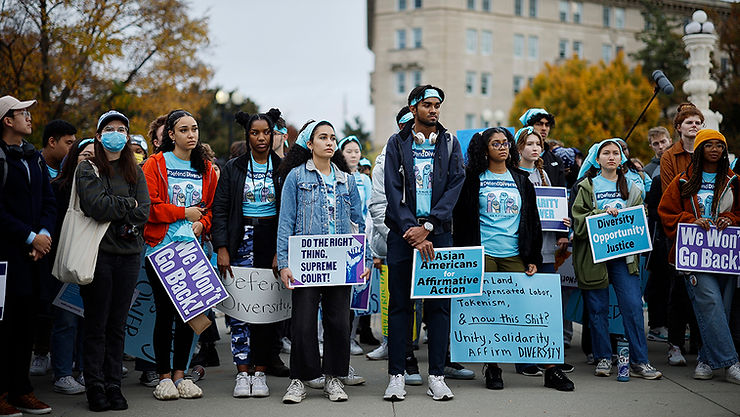By: Catherine Cai
Applying to colleges has long been a stressful experience. Taking standardized tests, piles of extracurriculars, and worrying over GPAs can take its toll on students. Something that has lightened the load for many students is affirmative action, which considers an applicant’s race. However, many colleges that once required race-based action have been forced to make a change due to the Supreme Court’s ruling on June 30, 2023, ending Affirmative Action. This ruling has drastically changed many things about the college application experience.
One thing that has changed in the application process is the role of race. Now, colleges are no longer allowed to inquire about the race of their applicants. Affirmative Action’s original definition was employing people “without regard to their race, creed, color or national origin” (NYT). The original intent of affirmative action was to give underrepresented groups more opportunities in the workforce until colleges adopted the practice. Now when Affirmative Action is brought up, people automatically think of the college admissions process. The abolishment of Affirmative Action means that colleges cannot use race as a basis for admission. Since Affirmative Action was overturned, colleges have been looking for another way to diversify their student bodies.
One way was to use the Socioeconomic Disadvantage Scale (SED) or advantage score for short. The SED is based on a scale of one to ninety-nine and takes into account the “life circumstances…family income and parental education…combined with the usual portfolio of grades, test scores, recommendations, essays and interviews” of potential students (NYT).
This was developed at the University of California-Davis, in a state where Affirmative Action has been banned since 1996. Since the ending of Affirmative Action in California, selective schools have seen “enrollment among Black and Latino students at UCLA and UC Berkeley [fall] by 40%, according to a 2020 study” (NPR). However, with this new method, UCLA’s medical school has more Black and Latino students enrolled. They have been approached by many other schools to share their methods to combat the new ruling.
This new formula might help fill the gap left by the loss of Affirmative Action and make college applications less stressful for the students as well.











